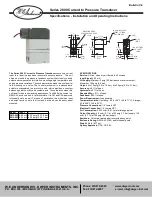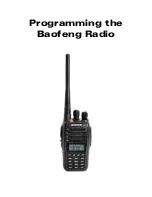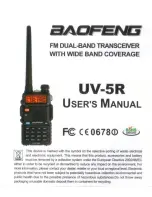
5
5
5
5////8/2007
8/2007
8/2007
8/2007
28
28
28
28
5.
5.
5.
5. Theory of Operation
Theory of Operation
Theory of Operation
Theory of Operation
5.1
5.1
5.1
5.1 H
H
H
H
ARDWARE INTERFACE
ARDWARE INTERFACE
ARDWARE INTERFACE
ARDWARE INTERFACE
Below is a description of all hardware pins used to control the AC4424.
5.1.1
5.1.1
5.1.1
5.1.1 TXD (Transmit Data) and RXD (Receive Data) (pins 2 and 3
TXD (Transmit Data) and RXD (Receive Data) (pins 2 and 3
TXD (Transmit Data) and RXD (Receive Data) (pins 2 and 3
TXD (Transmit Data) and RXD (Receive Data) (pins 2 and 3
respectively)
respectively)
respectively)
respectively)
The AC4424 accepts 5V TTL level asynchronous serial data in the RXD pin and interprets
that data as either Command Data or Transmit Data. Data is sent from the transceiver to
the OEM Host via the TXD pin. The data must be of the format 8-N-1 (8 data bits, No Parity
bits, One stop bit).
5.1.2
5.1.2
5.1.2
5.1.2 Hop Frame (pin 6)
Hop Frame (pin 6)
Hop Frame (pin 6)
Hop Frame (pin 6)
The AC4424 is a frequency hopping spread spectrum radio. Frequency hopping allows the
system to hop around interference in order to provide a better wireless link. Hop Frame
transitions logic Low at the start of a hop and transitions logic High at the completion of a
hop. The OEM Host is not required to monitor Hop Frame.
5.1.3
5.1.3
5.1.3
5.1.3 CTS Handshaking (pi
CTS Handshaking (pi
CTS Handshaking (pi
CTS Handshaking (pin 7)
n 7)
n 7)
n 7)
The AC4424 has an interface buffer size of 256 bytes. If the buffer fills up and more bytes
are sent to the transceiver before the buffer can be emptied, data corruption will occur. The
transceiver prevents this corruption by asserting CTS High as the buffer fills up and taking
CTS Low as the buffer is emptied. CTS On
CTS On
CTS On
CTS On in conjunction with CTS On Hysteresis
CTS On Hysteresis
CTS On Hysteresis
CTS On Hysteresis control the
operation of CTS. CTS On specifies the amount of bytes that must be in the buffer for CTS
to be disabled (High). Even while CTS is disabled, the OEM Host can still send data to the
transceiver, but it should do so carefully. Once CTS is disabled, it will remain disabled until
the buffer is reduced to the size specified by CTS On Hysteresis. The following equation
should always be used for setting CTS On, CTS On Hysteresis and RF Packet Size
RF Packet Size
RF Packet Size
RF Packet Size:
CTS On
CTS On
CTS On
CTS On –––– CTS On Hysteresis = RF Packet Size
CTS On Hysteresis = RF Packet Size
CTS On Hysteresis = RF Packet Size
CTS On Hysteresis = RF Packet Size
5.1.4
5.1.4
5.1.4
5.1.4 RTS Handshaking (pin 8)
RTS Handshaking (pin 8)
RTS Handshaking (pin 8)
RTS Handshaking (pin 8)
With RTS Mode
RTS Mode
RTS Mode
RTS Mode disabled, the transceiver will send any received packet to the OEM Host as
soon as the packet is received. However, some OEM Hosts are not able to accept data from
the transceiver all of the time. With RTS Mode Enabled, the OEM Host can keep the
transceiver from sending it a packet by disabling RTS (logic High). Once RTS is enabled (logic
Low), the transceiver can send packets to the OEM Host as they are received. Note:
Note:
Note:
Note:
















































